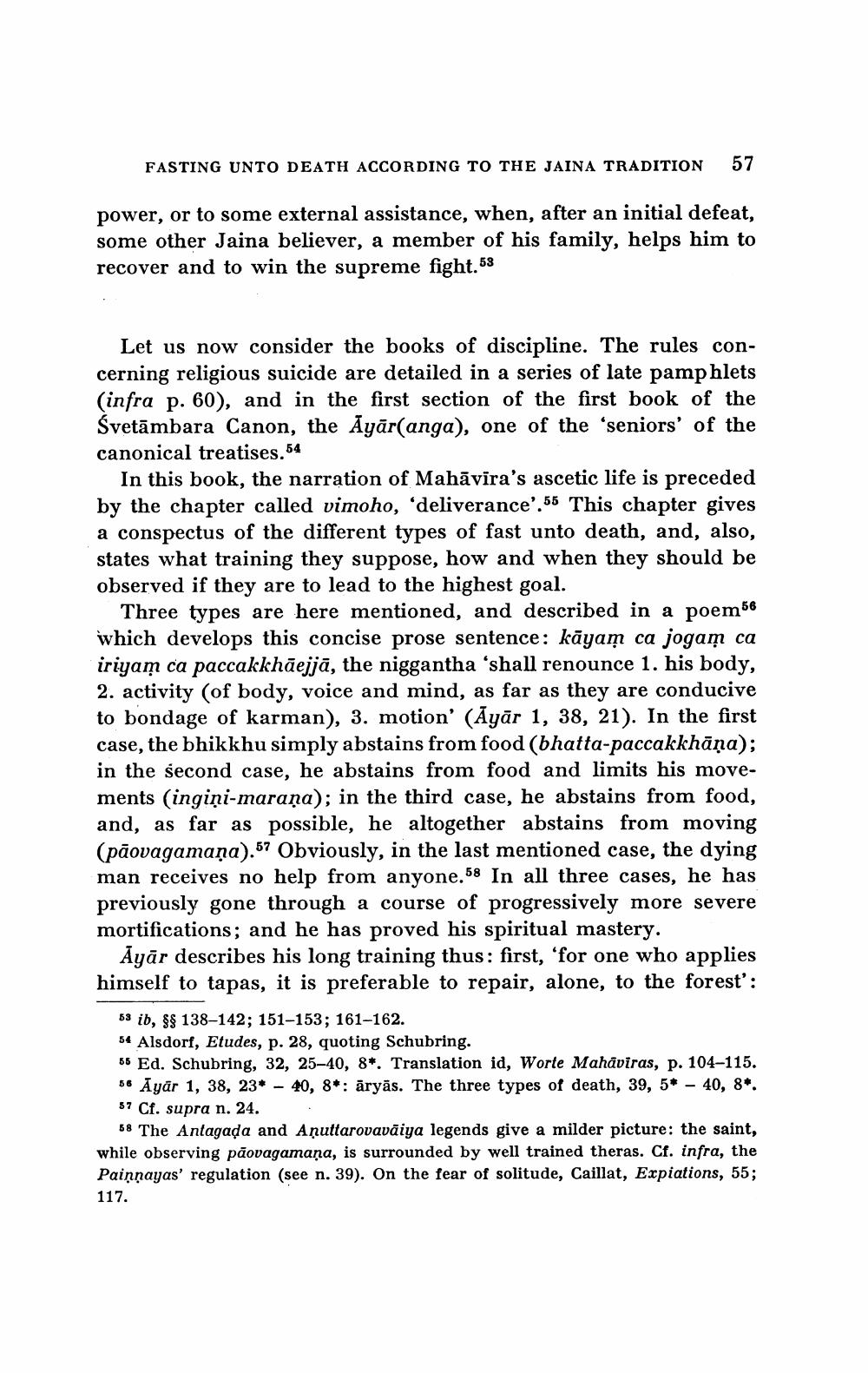________________
FASTING UNTO DEATH ACCORDING TO THE JAINA TRADITION
57
power, or to some external assistance, when, after an initial defeat, some other Jaina believer, a member of his family, helps him to recover and to win the supreme fight.58
Let us now consider the books of discipline. The rules concerning religious suicide are detailed in a series of late pamphlets (infra p. 60), and in the first section of the first book of the Svetāmbara Canon, the Āyār(anga), one of the 'seniors' of the canonical treatises.54
In this book, the narration of Mahāvīra's ascetic life is preceded by the chapter called vimoho, 'deliverance'.55 This chapter gives a conspectus of the different types of fast unto death, and, also, states what training they suppose, how and when they should be observed if they are to lead to the highest goal.
Three types are here mentioned, and described in a poem 56 which develops this concise prose sentence: kāyam ca jogam ca iriyam ca paccakkhāejjā, the niggantha 'shall renounce 1. his body, 2. activity (of body, voice and mind, as far as they are conducive to bondage of karman), 3. motion' (Āyār 1, 38, 21). In the first case, the bhikkhu simply abstains from food (bhatta-paccakkhāņa); in the second case, he abstains from food and limits his movements (ingiņi-maraņa); in the third case, he abstains from food, and, as far as possible, he altogether abstains from moving (pāovagamana).57 Obviously, in the last mentioned case, the dying man receives no help from anyone.58 In all three cases, he has previously gone through a course of progressively more severe mortifications; and he has proved his spiritual mastery.
Ayār describes his long training thus: first, 'for one who applies himself to tapas, it is preferable to repair, alone, to the forest:
58 ib, $$ 138-142; 151–153; 161-162. 54 Alsdorf, Etudes, p. 28, quoting Schubring. 66 Ed. Schubring, 32, 25-40, 8*. Translation id, Worte Mahäviras, p. 104-115. 56 Ayār 1, 38, 23* - 40, 8*: āryās. The three types of death, 39, 5* - 40, 8*. 57 Cf. supra n. 24. .
58 The Antagada and Aņuttarovavāiya legends give a milder picture: the saint, while observing pāovagamaņa, is surrounded by well trained theras. Cf. infra, the Paiņņayas' regulation (see n. 39). On the fear of solitude, Caillat, Expiations, 55;
117.




